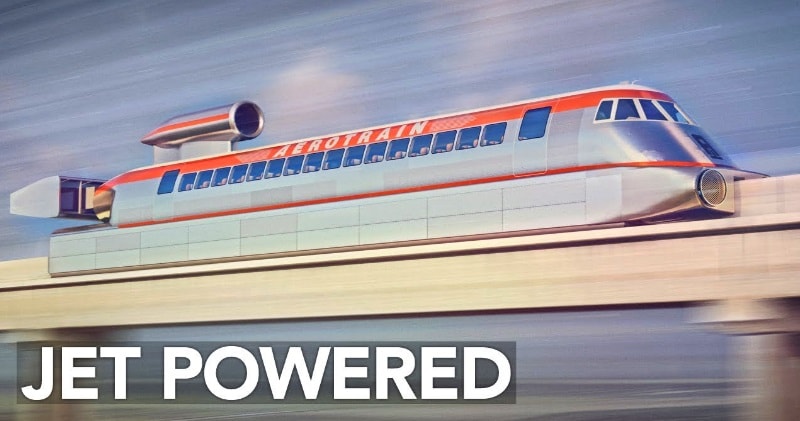In 1974, a French train sets a speed record, exceeding 250 miles per hour. But this train is unlike any other before it. Instead of rolling on train wheels, it hovers on a cushion of air. In the 1970’s hovertrains were seriously being considered the solution to slow, antiquated railways, which increasingly had to compete with new superhighways and even intercity air travel.
source/image: Mustard
Without the rolling resistance of train wheels, hovertrains promised greater efficiency and much higher speeds. By feeding high pressure air through lifting pads, hovertrains float on a cushion of air much like a hovercraft. One of the most widely known hovertrain prototypes was called the Aerotrain. Lead engineer Jean Bertin and his team in France. read more: Mustard
Designed several versions, including one that could carry 80 passengers. The i80HV was powered by a turbofan sourced from an airliner, producing over twelve thousand pounds of thrust. At the front, a 400 horse power gas-turbine supplied high-pressure air to hover the twenty loaded train a quarter of an inch off its guideway.
Advertisement
But like their counterpart the Maglev, Hovertrains failed to revolutionize rail. Hovertrains, Maglevs, or any other innovative alternative to rail has to compete with nearly a million miles of rail line already in existence. Existing rail networks were modernized with sections of track that could handle higher speeds. New signaling technologies were developed along with more advanced wheelsets.











